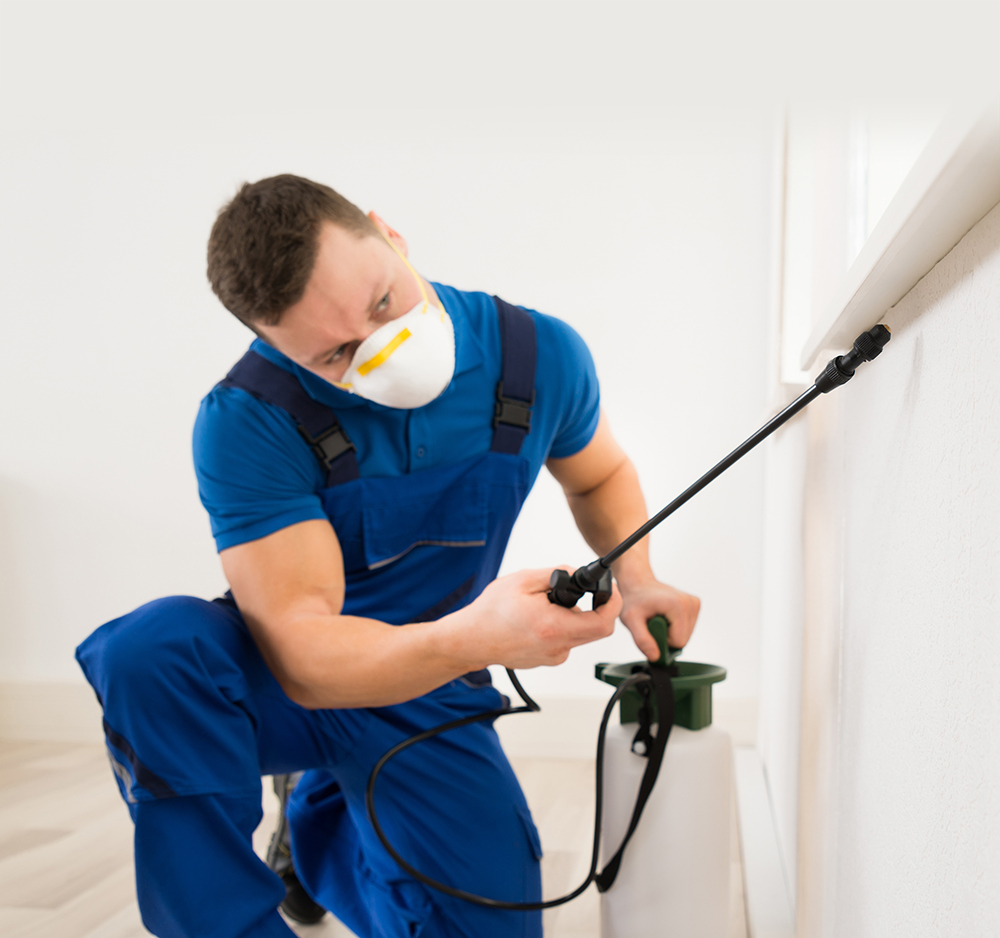Specialist Bug Control Techniques for Long-Term Outcomes
In the world of bug control, accomplishing continual efficacy and long-lasting outcomes requires a careful approach that transcends mere extermination. Specialist insect control methods envelop a comprehensive strategy that begins with a complete examination and evaluation, adhered to by precise pest identification to understand their actions patterns. The execution of Integrated Bug Administration (IPM) concepts, coupled with eco-conscious treatments, develops the cornerstone of lasting pest obliteration. The true examination exists in the ongoing monitoring and upkeep of the dealt with locations, making sure a pest-free atmosphere for the direct future. By delving into the intricacies of these strategies, a much deeper understanding of specialist insect control approaches for withstanding end results arises.
Examination and Assessment
Upon getting in a residential or commercial property for pest control solutions, the preliminary step is a detailed examination and assessment to recognize the extent of the problem and figure out one of the most effective therapy plan. Expert bug control professionals are educated to carefully check out the facilities, looking for signs of insect activity such as droppings, chomp marks, nests, or any structural damages. They will likewise evaluate the problems that might be bring in bugs, such as food sources, water leaks, or access points.

Bug Identification and Behavior

Furthermore, recognizing the actions of the identified insect is vital to carrying out reliable control steps. Understanding where insects nest, what they feed on, and their task patterns can aid pest control professionals devise methods to eradicate them efficiently.
Integrated Parasite Monitoring (IPM)
Integrated Pest Monitoring (IPM) techniques incorporate multiple methods to control and prevent insect problems in a lasting and eco-friendly fashion. Exterminator DC. By integrating approaches such as biological control, habitat manipulation, adjustment of social techniques, and the usage of resistant ranges, IPM intends to reduce the usage of chemical pesticides
Among the crucial concepts of IPM is the focus on avoidance. This aggressive approach includes monitoring insect populaces routinely to detect any type of possible problems prior to they escalate. By identifying bug troubles early on, pest control actions can be executed quickly and successfully.
Furthermore, IPM promotes the usage of non-toxic insect control approaches whenever feasible. This can include employing all-natural killers of the parasites, presenting helpful bugs, or making use of pheromones to interrupt breeding patterns. By lowering dependence on chemical pesticides, IPM not only shields the setting but likewise assists keep a balance in the community.
Environmentally-Friendly Treatments
Executing eco-conscious techniques in pest control procedures can successfully resolve infestations while prioritizing ecological sustainability. Environmentally-friendly therapies concentrate on lessening the influence of insect control techniques on ecological communities, non-target microorganisms, and human health. These methods frequently entail making use of all-natural killers, such as ladybugs or nematodes, to manage pest populations, minimizing the requirement for chemical treatments. Furthermore, techniques like habitat control, such as readjusting moisture levels or removing food sources, can aid deter pests without the usage of unsafe compounds.
Another key aspect of environmentally-friendly therapies is the use of natural and eco-friendly products that break down promptly without leaving hazardous deposits in the environment. Agricultural pesticides stemmed from plants like chrysanthemums or neem supply efficient insect control while positioning marginal danger to non-target varieties. Utilizing approaches like heat treatments or pheromone traps can target specific insects with precision, lowering the total environmental influence of pest control practices.
Ongoing Tracking and Maintenance
Consistent monitoring and upkeep are essential elements of reliable parasite control monitoring. Continuous tracking plays a vital duty in guaranteeing that bug problems are identified very early and handled promptly. Routine assessments by qualified specialists are necessary to recognize any kind of indicators of pest activity, evaluate the efficiency of previous therapies, and make modifications to the parasite control plan as required. By keeping track of bug populations with time, bug control experts can track fads, expect possible issues, and implement precautionary measures to lessen the risk of future problems.
Along with tracking, upkeep practices are crucial for long-term insect control success. This includes executing appropriate cleanliness procedures to eliminate possible food and water sources for bugs, sealing off entrance points to stop pests from going into the properties, and attending to any kind of structural problems that could assist in pest invasions (exterminator near me). By including bed bug dog ongoing tracking and upkeep into an integrated bug management approach, services can make sure a pest-free atmosphere and guard their building against expensive damages and health and wellness dangers
Verdict
Finally, making use of professional insect control methods such as detailed evaluation and assessment, precise insect recognition and understanding of their behavior, integrated bug monitoring techniques, environmentally-friendly therapies, and continuous surveillance and maintenance are essential for accomplishing lasting cause parasite control. By executing these approaches, individuals can properly handle parasite problems and keep a pest-free atmosphere in a lasting fashion.
Comments on “Bed Bug Dog Discovery: Discover Infestations Early for Assurance!”